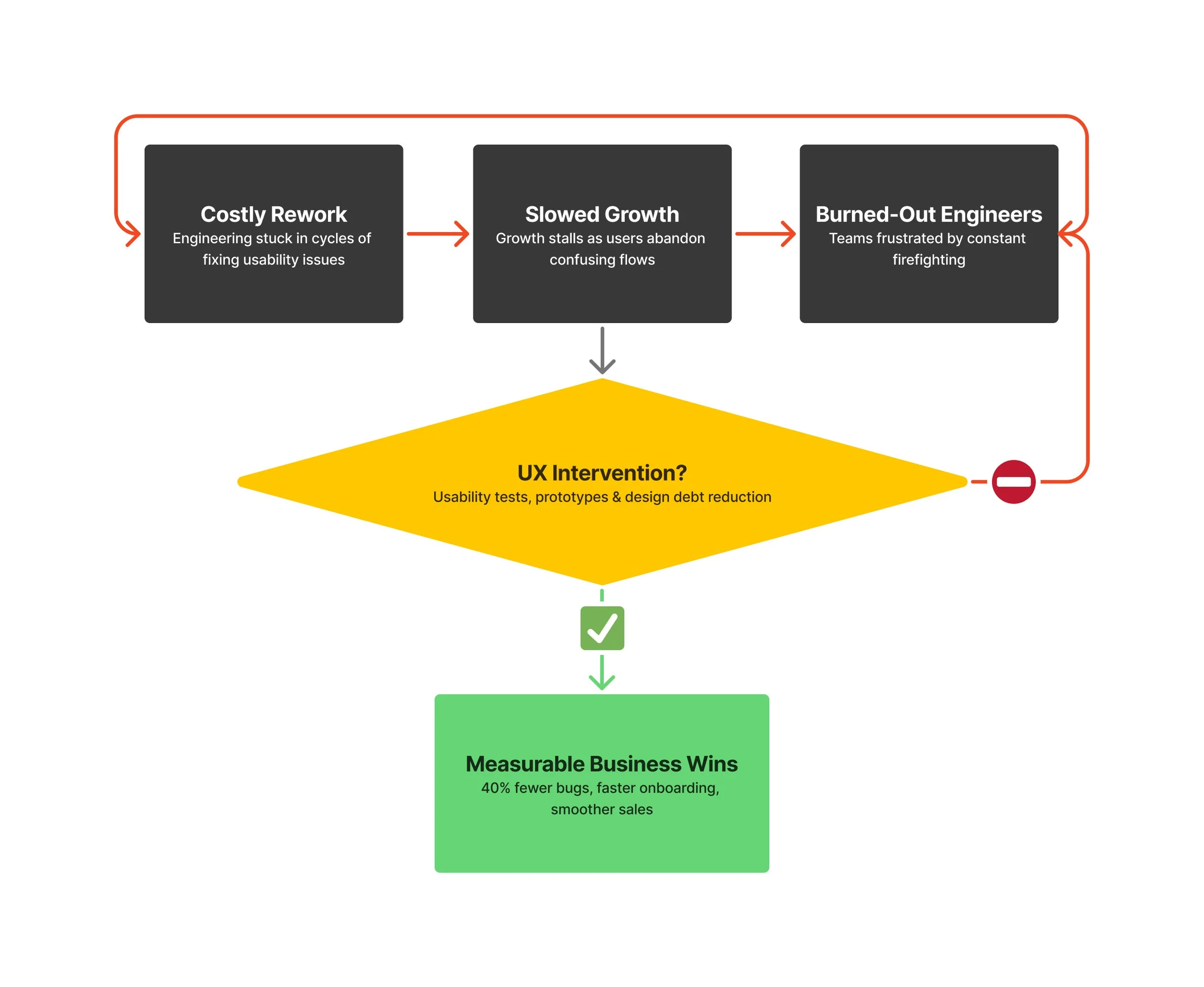The Real ROI of UX: What Founders Miss When They See It as “Design”
If you still think of User Experience (UX) as “just making it look nice,” you’re leaving money on the table. Good UX isn’t decoration — it’s efficiency for your users and your team. It’s the difference between products that grow organically and those that stall after Series B.
Here’s what founders often miss:
UX doesn’t just improve aesthetics. It reduces rework, increases activation, and cuts churn — three metrics that directly affect your burn and valuation.
The Series B Wake-Up Call
I recently worked with a Series B CEO who faced a painful reality. Their engineering team was stuck rebuilding onboarding flows over and over because users dropped off early. Sales teams promised features users couldn’t find, causing misaligned expectations and lost deals.
Months lost. Growth slowed. Engineers burnt out.
It’s a loop many startups fall into — endless fixes, rework, and frustration that quietly burn runway.
Without UX intervention, that cycle repeats itself.
With it, teams ship smarter, faster, and with fewer surprises.
Without UX intervention, teams stay stuck in a costly rework loop. With UX, the cycle breaks — leading to measurable business wins.
By shifting focus to UX — running quick usability tests before each release and validating flows with clickable prototypes — they reduced post-launch bugs by 40% and cut onboarding abandonment significantly in just one quarter.
This wasn’t just a design win. It was a business win: faster time to revenue, smoother sales conversations, and a motivated team.
UX Cuts Rework and Accelerates Velocity
Engineering time wasted fixing usability issues is costly runway lost — plain and simple.
Whether it’s confusing onboarding steps, hidden features, or sales-engineering misalignment, these are UX challenges undermining your growth.
Fixing issues after launch is 10× more expensive than catching them early.
Run short usability tests and prototyping before shipping. Treat design debt like tech debt: track it, budget for it, fix it.
Result? Engineers spend more time innovating, less time patching, and your product ships faster.
UX Drives Activation Through Clarity
A sleek landing page alone won’t convert users. They must know what to do next, why it matters, and how quickly they’ll see value.
Focus on the “aha moment”—when users grasp your product’s value and engage. Watch activation rate and time to value closely.
Small changes pack a punch.
A SaaS platform I advised cut an import process from five confusing steps to two. Activation jumped 27% in a quarter.
Progress bars, guided onboarding, smart defaults — not just UX niceties, but revenue accelerators.
UX Reduces Churn by Building Trust
Feature chasing wins customers; UX keeps them.
Intuitive, reliable, consistent experiences build trust that retains customers.
Track NPS, CSAT, and support tickets. A drop in “how do I…” questions = clearer UX and happier users.
UX isn’t a sprint; it’s your retention strategy.
Start Today: Your UX Checklist
Founders who invest early win leverage every time.
Run one (or five) usability tests on a critical user flow this month
Map that flow end-to-end to uncover unseen pain points
Fix one recurring user confusion your support team hears daily
UX is your most underused growth lever. Treat it like the strategic asset it is — not just a design exercise.
Founder’s Takeaway
If your team’s stuck fixing the same issues, rebuilding flows, or debating UX in circles — it’s not a design problem. It’s a clarity problem.
I help founders scale product organizations that move faster, make smarter decisions, and ship work that drives real business outcomes — not just better UX.

